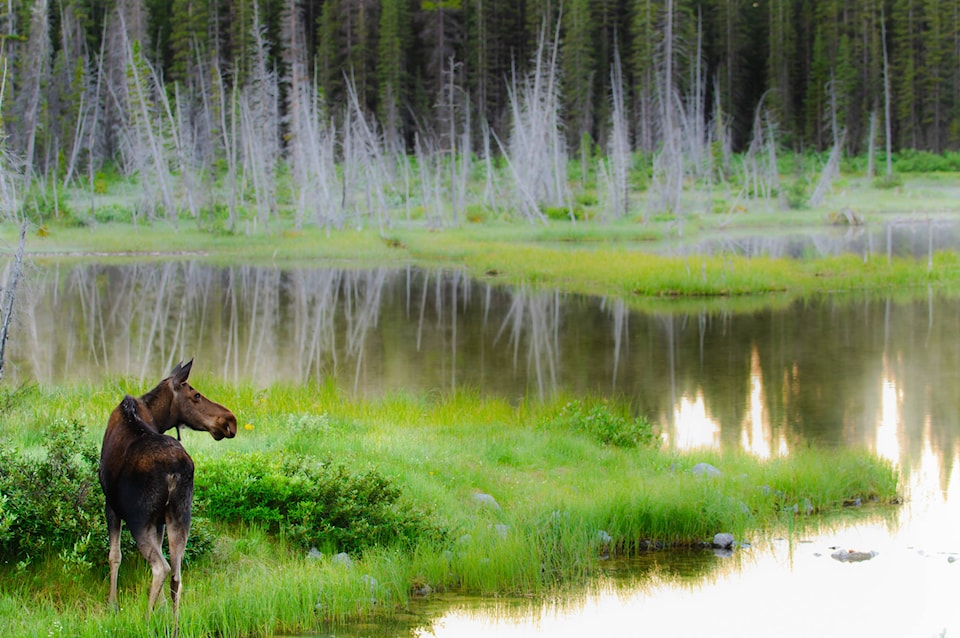A test project is underway in a 720-hectare area east of the Babine Mountains to increase the moose population by providing an ongoing supply of forage.
Workers have been partially cutting through quantities of Scouler’s willow in a technique called hinging whereby saws are used to cut halfway through a tree trunk. The tree is then pushed over to provide cover and forage.
Animals then have forage readily available and the technique also encourages stump and tree sprouting so as to provide an ongoing supply.
The $107,847 project is being financed by the Forest Enhancement Society of B.C. and the Habitat Conservation Trust through the Bulkley Valley Rod and Gun Club.
The impetus for the project comes from a decline of the moose population throughout the northwest with biologists indicating one of the reasons is the loss of quality moose forage.
A follow up study will provide information and guidance for future work.
“Seven hundred and twenty hectares of Scouler’s willow sites have been treated with the Lake Babine area this year alone and is expected to enhance the forage supply of treated vegetation by up to four times for up to 15 to 20 years,” said Smithers biologist Len Vanderstar who managed the project through the Bulkley Valley Rod and Gun Club.
The contribution to the project from the Habitat Conservation Trust Foundation is part of $9.3 million spent by it this year on 175 projects, the largest annual amount it has ever committed.
Elsewhere in the region, the conservation trust and forest enhancement society are financing a $50,000 project to restore and replant whitebark pine, a species valued by bears.
That includes planting seedlings, preparing seeds for future plantings and monitoring three trial areas.
By itself, the heritage trust foundation is financing:
- a quality waters strategy for the Bulkley, Kispiox and Morice rivers to review what anglers target and to examine the feasibility of a lottery booking system. The project also includes stock assessment activities on the Skeena, Kitwanga, and Bulkley Rivers.
- work to restore fish passages at road and rail crossings where structures may affect fish movement. This includes investigating culverts.
- a project involving approximately 73 kilometres of roads within the Whitesail Reach area to reduce access for both humans and predators of the Tweedsmuir-Entiako caribou herd. This will aid in the creation of 7,176ha of low elevation summer habitat from the shoreline of Whitesail Reach to no-harvest areas.
